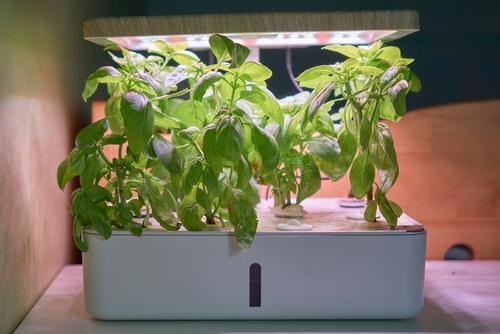Hydroponics is a great way to grow plants using water and plant nutrients. While it sounds tricky or expensive, it doesn’t have to be! There are small hydroponics kits that you can purchase and set up in your home. You can also make your own system using pipes and LED lights. Although almost all plants can thrive in hydroponics systems, there are specific species that do best. Follow along to learn about the top 10 best plants for a hydroponic system.
1. Basil
One of the best plants for a hydroponic system is basil. Basil plants are sweet-smelling culinary herbs. This plant is a member of the Lamiaceae family. Basil plants are grown for their scent and delicious leaves. They are used in many dishes. There are also hundreds of basil varieties, including sweet basil, Thai basil, and lemon basil. Basil plants are fast-growing and thrive in many environments. You can grow them in gardens, containers, and even indoors.
Sometimes, you don’t even need dirt to grow large and delicious basil plants!You aren’t limited when it comes to growing basil plants in a hydroponics system. Many different varieties thrive in deep and nutrient-rich water. Although this plant does well in hydroponics systems, you should prune and harvest frequently to keep your plant healthy. If your basil plant gets too heavy or bushy, not all parts of the plant will receive light.
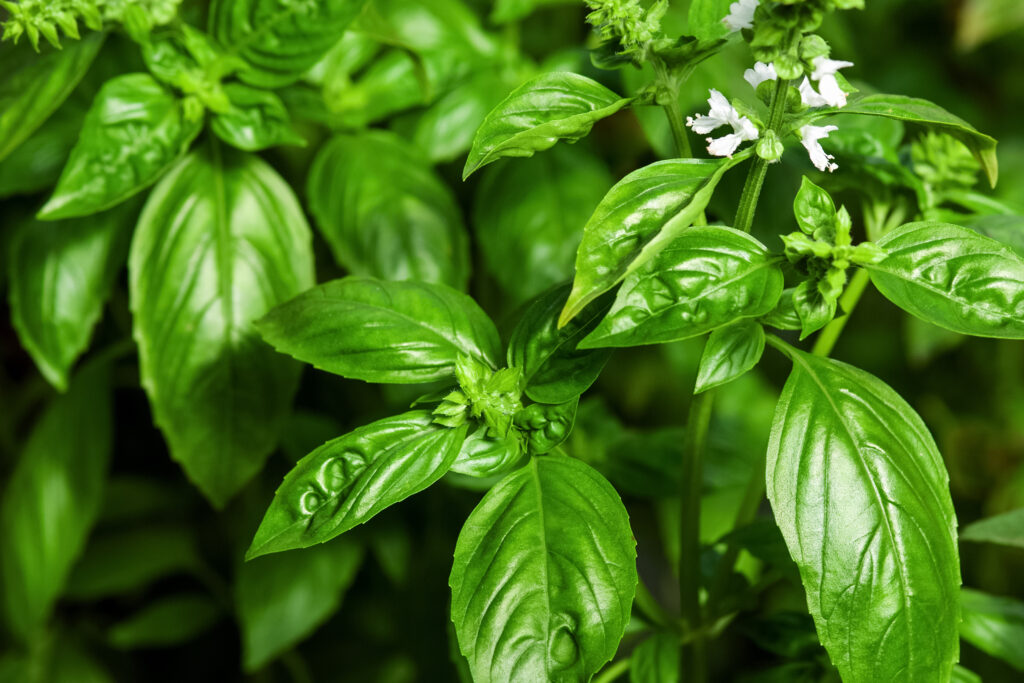
Basil plants are excellent plants for hydroponics system.
©Nadya So/Shutterstock.com
2. Lettuce
Leafy greens, like lettuce, are one of the best plants you can grow in water. They are low-maintenance and come in many sizes, colors, and shapes. Lettuce is an annual plant typically grown for salads. They are members of the family Asteraceae. Lettuce has a very long history. It was firmed farmed by the ancient Egyptians.
Can you guess how many types of lettuce there are in the world? Currently, there are likely over a hundred varieties of lettuce and about a dozen cultivars. Some lettuce types include romaine, looseleaf, summer crisp, butterhead, and red-leaf lettuce.
Lettuce in hydroponics systems is a fast-growing crop. You can harvest these plants from seed in as little as four weeks. Like basil, you can harvest the leaves over and over again. You also don’t need a lot of space. You can grow lettuce hydroponically in vertical or horizontal systems. Some systems are small enough that they can sit on top of your kitchen counter.
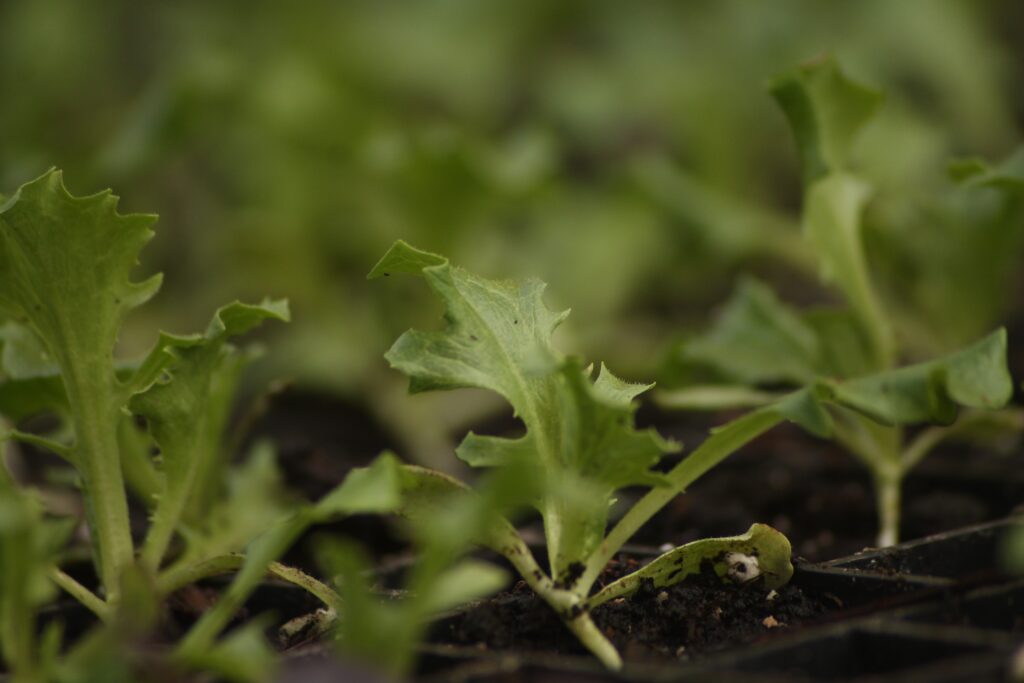
Lettuce excels in hydroponics systems. It’s a member of the family Asteraceae.
©HarmonyJoy/Shutterstock.com
3. Strawberry
Next on our list are strawberries. You aren’t limited to leafy greens and herbs when growing plants hydroponically. Strawberries are excellent and common plants for hydroponic systems since they spread and can hang down. However, they can be tricky and take longer to harvest compared to lettuce or basil.
Garden strawberries are bright red and highly nutritious. Raw strawberries are made up of about 91% water. They are rich in Vitamin C and manganese. Strawberries are easily stressed out. They can suffer from diseases and pests including aphids, moths, mites, and powdery mildew. It’s easy to combat pests though if you’re growing strawberries in a hydroponics system indoors or in a greenhouse. Typically, the most difficult part of growing these delicious fruits in just water is avoiding root rot and properly pollinating the flowers. Not all strawberry flowers develop into strawberries. To pollinate strawberry flowers, use a cotton swab or small paintbrush to collect pollen and transfer it from flower to flower.
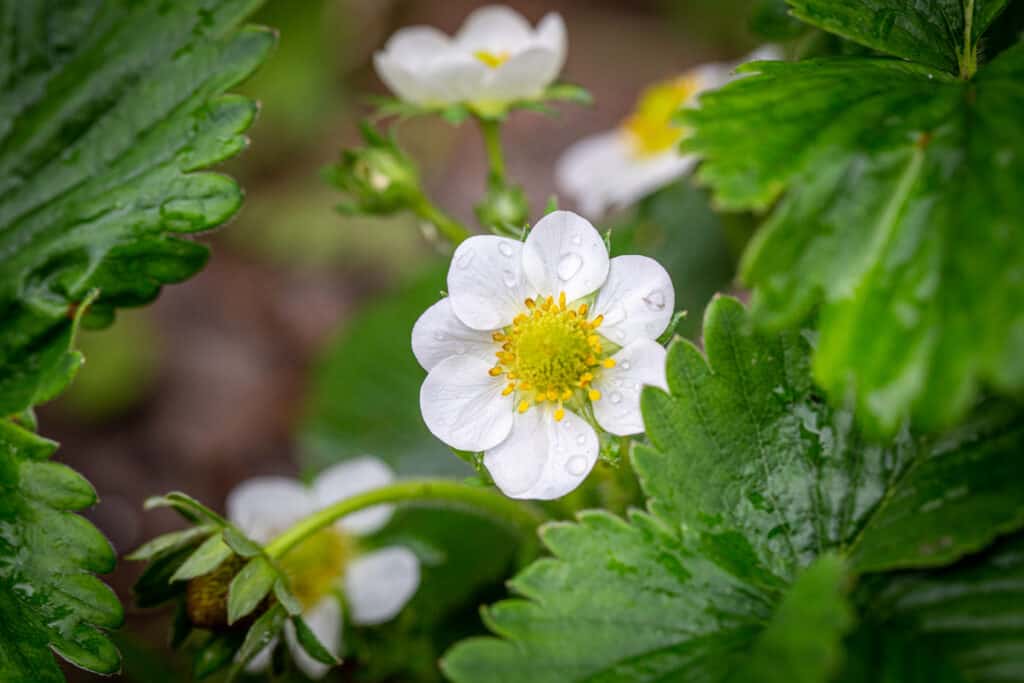
Strawberries produce beautiful white flowers.
©iStock.com/nicksus
4. Mint
Another excellent plant to grow in a hydroponic system is mint. Mint plants are very fragrant. There are about 20 recognized species and even more cultivars, although this number shifts depending on the expert. Mint plants are aromatic perennial herbs that spread quickly. In soil, they are great to grow in containers, but in gardens, they can easily take over your yard. Most mint varieties have bright green leaves, but the leaves can be purple, blue, and dark green. The scent also varies. Some recognized species include wild mint, horse mint, slender mint, forest mint, and spearmint.
Growing mint hydroponically is rather easy. Some systems come with built-in lights that automatically turn on and off on a schedule. Your lovely mint plants will need at least 14 to 16 hours of light each day. It’s also best to grow mint plants indoors hydroponically, away from hot weather as high temperatures can cause the leaves to wilt or yellow. Mint plants need temperatures ranging from 55 to 70 °F.
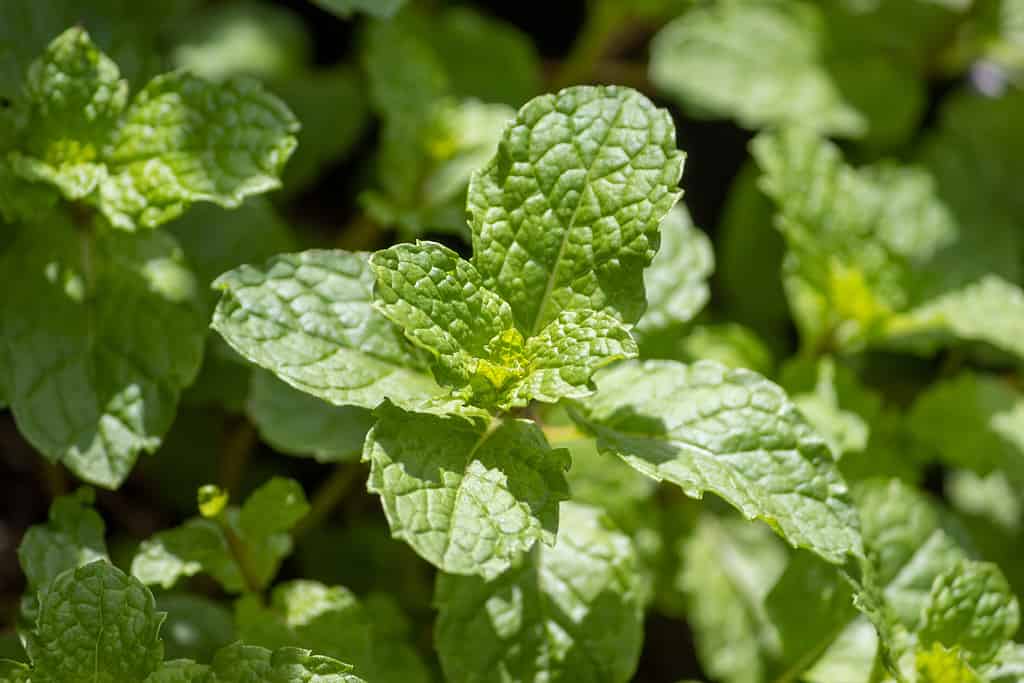
Mint plants are fast-growing and quick-spreading herbs.
©Leo Herdy/Shutterstock.com
5. Spinach
Growing spinach in a hydroponics system is similar to growing lettuce. There are few differences between the two. If the heat is too high or they receive too much light, your cool-weather leafy green may bolt and flower, producing bitter-tasting leaves.
Spinach plants are native to central and Western Asia. These plants are members of the family Amaranthaceae. They have a long history. Scientists believe they may have originated about 2,000 years ago in ancient Persia. It quickly spread to China, Nepal, and Sicily.
Spinach is a highly nutritious and light leafy green. One leaf is made up of about 91% water. The great thing about this delicious green is that you can freeze it, cook it, or eat it raw. It’s a staple in many dishes. It also doesn’t need a lot of space to grow. You can create your own hydroponics system for your kitchen using a glass jar and a growing medium. Many gardeners recommend using rockwool cubes. You can start harvesting spinach leaves in as little as 35 days from seed.
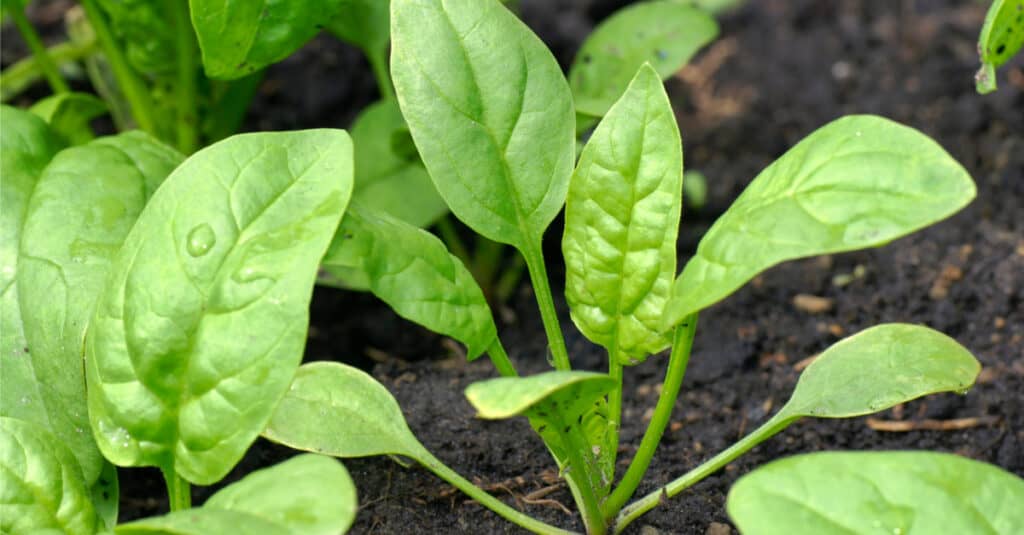
Spinach plants are cool-weather crops that thrive in hydroponic systems.
©iStock.com/SylvieBouchard
6. Kale
Another delicious and nutritious leafy green to make our list is kale. It’s one of the easiest plants to grow, but some varieties are massive and require space. Kale is also fairly cheap to grow. Seed packets are inexpensive and come with sometimes hundreds of small kale seeds. When you grow your own kale, you can also increase the heat or light time to allow it to flower and seed.
Kale is a plant known for its curly edible leaves. The leaves can be green or purple depending on the variety. Kale is also sometimes called the leaf cabbage, as they don’t form a head. Kale originates from the eastern Mediterranean and Anatolia. It’s been cultivated since at least 2000 BCE.
Kale does not tolerate heat, but it can grow even after a heavy frost. They’ve been recorded growing in temperatures as low as 5 °F. Different types of kale include blue-curled kale, dinosaur kale, plain-leaf kale, sparkly kale, and feathery-type kale.
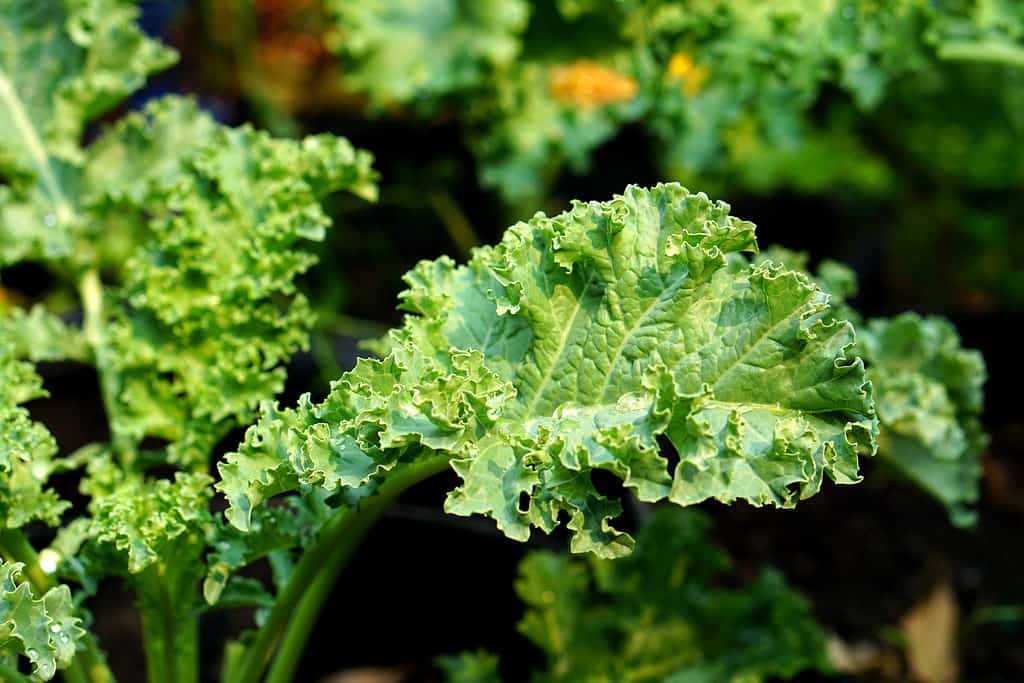
Kale is a popular green. Although lettuce-like, it is a cabbage cultivar grown for its edible leaves.
©BlueSky_31/Shutterstock.com
7. Bok Choy
Bok choy is a tasty green vegetable perfect for growing in soil, containers, and hydroponic systems. They are cool-weather plants native to China. The plant has been cultivated since at least the 5th century AD. Most bok choy varieties have a similar appearance but differ in color and size. Typically, bok choy is sold as either baby bok choy or mature boy choy. Baby bok choy is smaller and sweeter than the mature version of this plant. The flavor is a blend of spinach and water chestnut. It’s excellent steamed and also raw in salads.
Bok choy takes no time to grow, but not all systems are large enough to contain this Chinese cabbage. From seed to harvest, the plant only takes 30 days. It’s a popular choice for tall vertical hydroponic systems. You can use either rockwool or coconut coir as a growing medium. Too much heat can cause the Chinese cabbage to flower. Bok choy flowers are small yellow buds. They are sometimes used as a garnish.
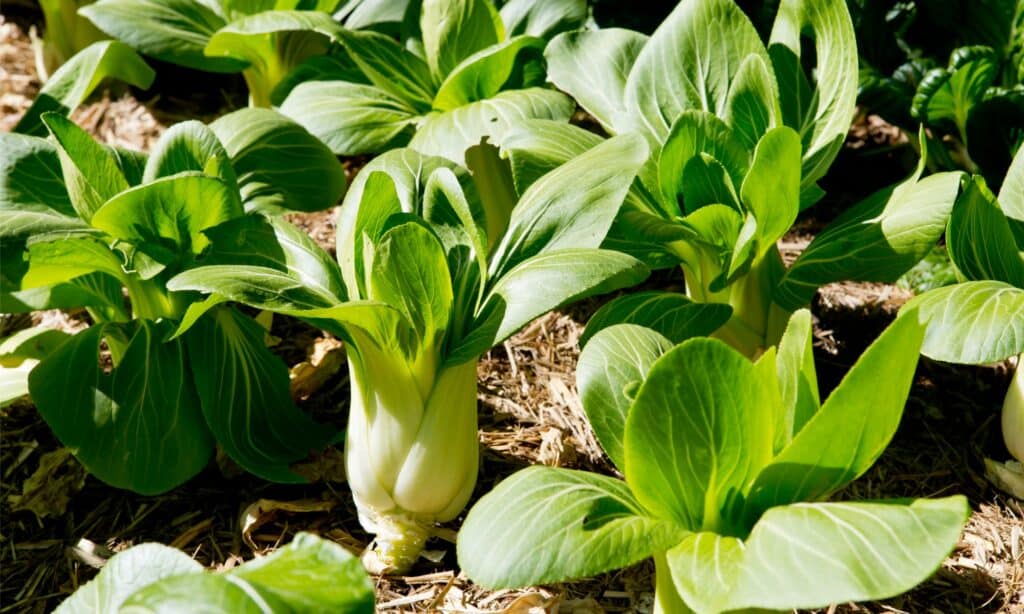
Bok choy is sold as mature bok choy and baby bok choy.
©iStock.com/CreativeFire
8. Tomato
Imagine no longer needing to run to the grocery store every time you need tomatoes. Juicy tomatoes of all types are excellent to grow hydroponically. However, it’s best to choose a small container-friendly variety. Dwarf tomatoes still produce a lot of flowers and fruit hydroponically, in any space. If you choose a dwarf tomato variety, you can grow this plant indoors with a small system.
Tomatoes are technically fruits. They are edible berries produced from vibrant yellow flowers. Tomatoes originate from Mexico. Their wild ancestor is the Solanum pimpinellifolium. These wild fruits though were tiny, about the size of a pea. Tomatoes quickly spread when the Spanish landed in Mexico. During this time, tomatoes were common in many Mexican dishes, including in sauces.
Tomatoes grow faster in hydroponic systems under the right conditions. You can also transplant a seedling or mature tomato plant from a water-based system to a container or in-ground. There are also many types to choose from, not all tomatoes are large or red. For example, some cherry tomatoes are red, pink, yellow, green, or purple.
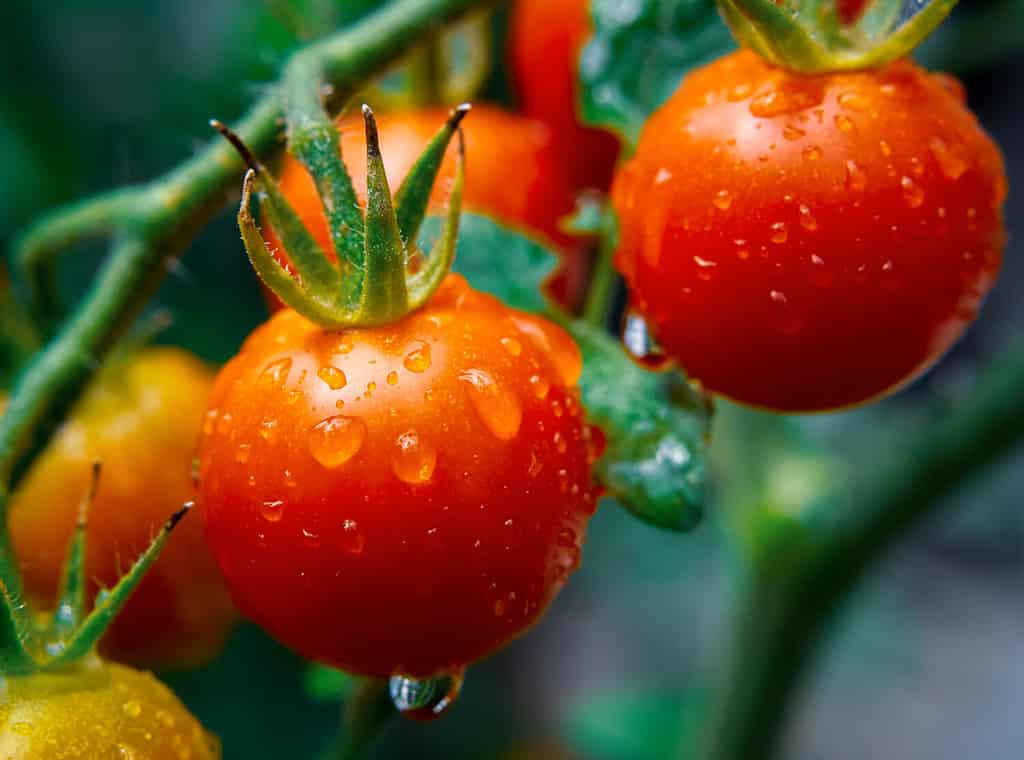
Tomatoes grow very fast in hydroponic systems.
©Shannon Birchler/Shutterstock.com
9. Arugula
Another one of the best plants for a hydroponics system is arugula, a delicious, long, and unique-shaped leafy green. Arugula plants are edible annuals known for their long and slender green leaves. The plants also produce white small flowers. From these flowers, you can collect arugula seeds. Arugula plants can reach about 8 to 29 inches tall. Although most people only eat the leaves of arugula plants, the flowers and seeds are also edible. Raw arugula has many uses. It’s sometimes used as a garnish on top of hot dishes or is mixed into salads.
Arugula plants are easy to grow in hydroponic systems. They need a water pH level between 6.0 and 7.5 and about 12 hours of sunlight. Too much sunlight though will cause these leafy greens to flower and slow growth. You can start to harvest the leaves in about 30 to 50 days, depending on the variety.
10. Jalapeños
Last but not least are jalapeños. Technically, most pepper plants thrive in hydroponic systems, as long as there is enough light and space. While this is true, we don’t recommend growing a leafy cool-weather lettuce plant and a jalapeños plant under the same grow light. They require two completely different light and heat needs. Jalapeños without enough bright light or warmth won’t germinate or grow, and lettuce under high heat flowers and dies.
Jalapeños are excellent pepper plants that produce medium-sized hot fruit. Interestingly, scientists and historians still don’t know the origins of jalapeños. They’ve likely originated in Mexico and parts of South America, but the exact time is unknown. If you’re going to grow pepper plants in a hydroponic system, it’s best to also use a fan to promote air circulation. This can prevent mold.
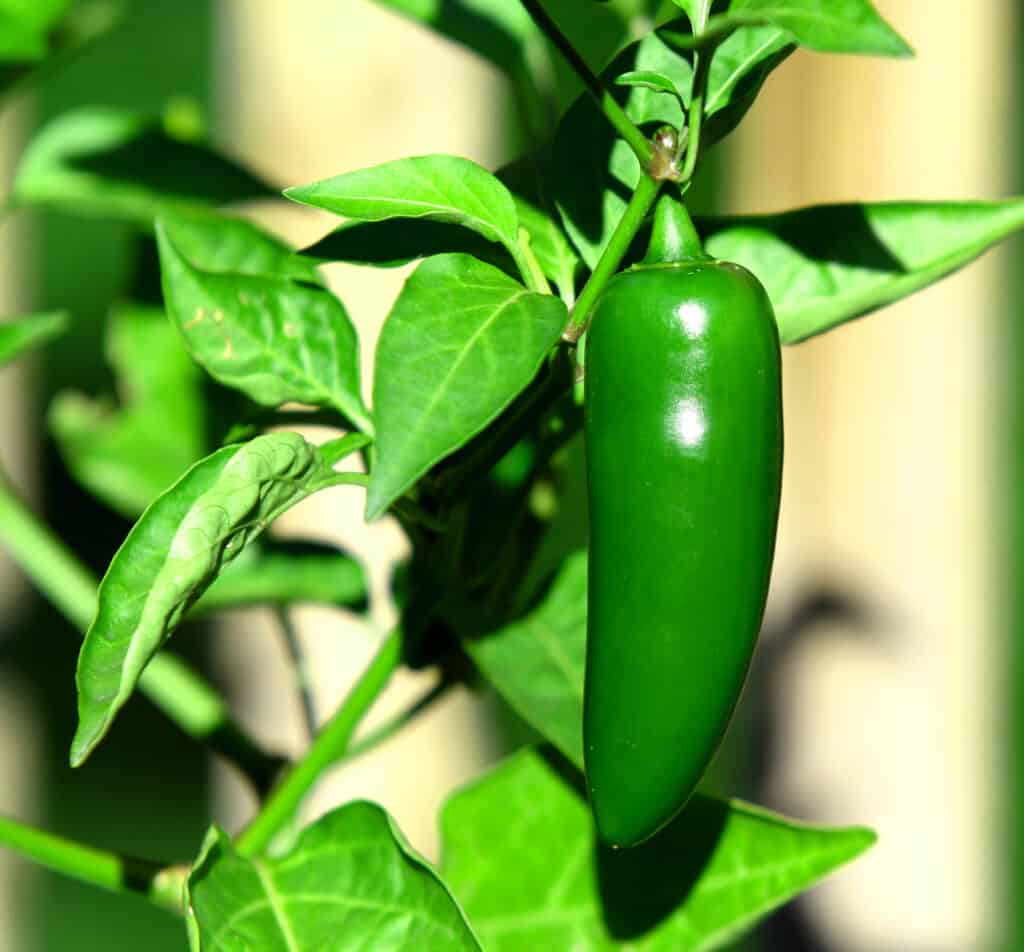
Jalapeños are excellent plants to grow in a hydroponic system.
©iStock.com/Victor Ward
Thank you for reading! Have some feedback for us? Contact the AZ Animals editorial team.

